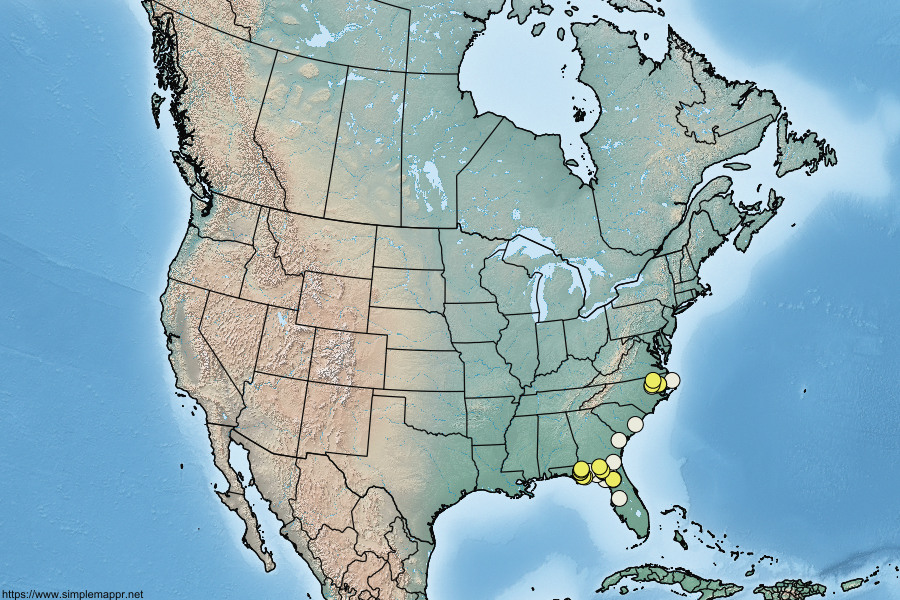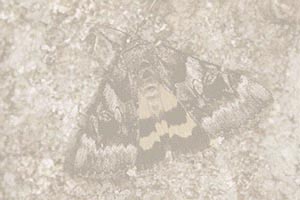 Catocala aestivalia
Catocala aestivalia
Kons & Borth, 2015
A specialist of hydric hardwood forests in Florida and coastally where the
likely sole foodplant Crataegus aestivalis occurs, see
Kons & Borth (2015)
for details. Larva generally evenly toned gray to brownish, but overlapping the patterns of
other small Rosaceae-feeding species (notably the common
alabamae)...
but perhaps separable in the field on foodplant preference,
since the only other Catocala larvae Kons & Borth found during continued sampling of
Crataegus aestivalis were
mira, whose head capsule is
typically distinguishable by the heavy red to black suffusion covering much of the face.


|


